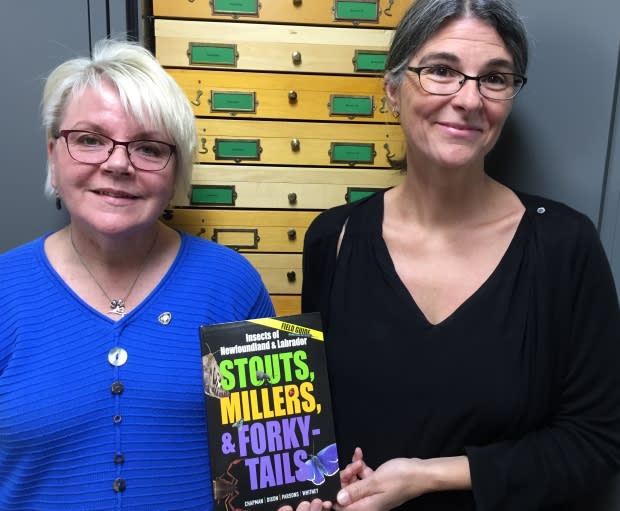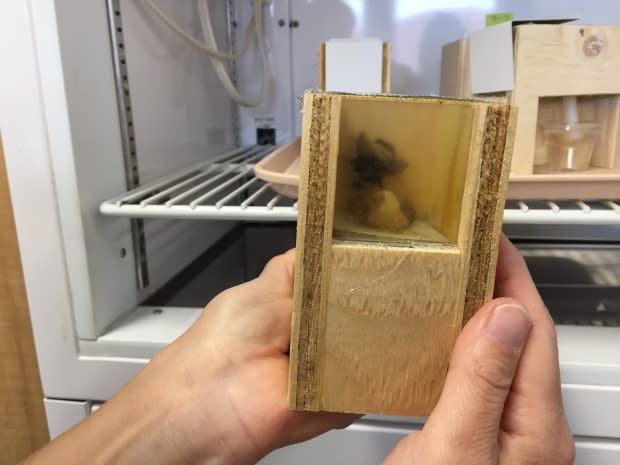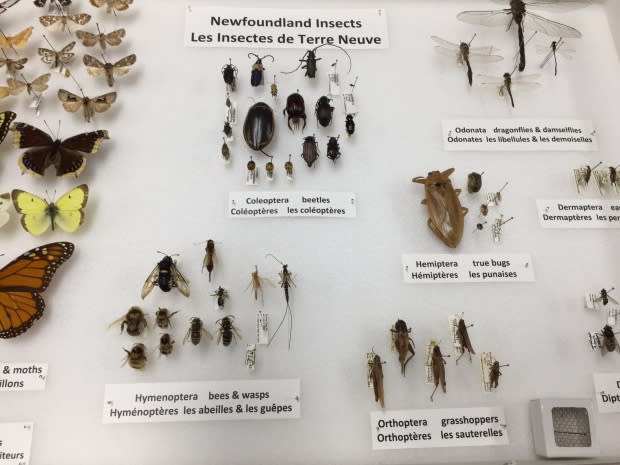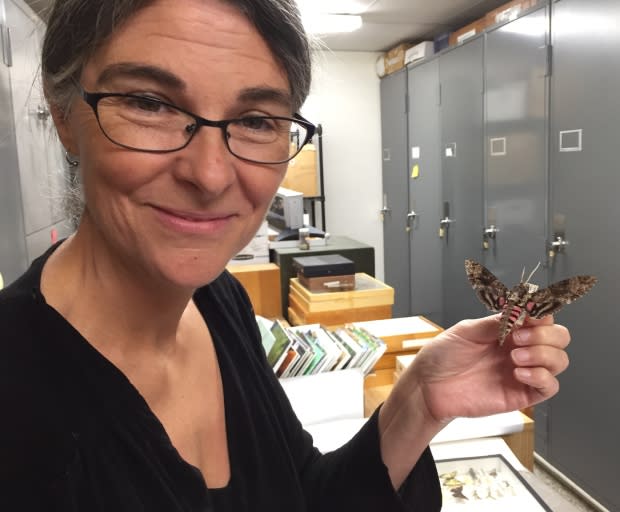Stouts, Millers and Forky-Tails: Inside a new field guide to the creepy-crawlies of N.L.
Peggy Dixon and Carolyn Parsons are really into bugs.
A typical work day for the entomologists with Agriculture and Agri-Food Canada in St. John's might include identifying specimens, adding to their massive insect collection or rearing insect colonies for research purposes.
An incubator humming away in the corner of their lab at the St. John's Research and Development Centre is home to 11 huge queen bumblebees of four different species, each one in its own nesting box kept at a balmy 27 C.
A few of the queens have already started laying eggs on small pollen balls inside the boxes.

One of them, the yellow-banded bumblebee, is featured on Page 53 of a new field guide to the insects of Newfoundland and Labrador. Populations seem to be healthy in this province, but in the rest of the country it is listed as endangered.
"In the rest of Canada farmers have access to commercial bumblebee colonies, but because our honeybee industry is relatively disease-free, there's been a restriction on the import of all bees onto the island," said Parsons.
"So we're basically trying to see if we can find a native bumblebee species that we can rear and then have perhaps available to farmers, but that's really far down the road."

Stouts, Millers and Forky-Tails — otherwise known as deer flies, moths and earwigs — includes key identifying features, life-cycle details and photographs of more than 300 insects you might encounter in the province, whether it's on a walk in the woods or lurking in your basement.
Dixon and Parsons contributed to the book, along with Tom Chapman, a professor of entomology at Memorial University, and Hugh Whitney, a former chief veterinary officer for Newfoundland and Labrador.
It took them more than two years to compile the field guide, and even though it contains references for more than 300 insects, it's just a drop in the bucket when it comes to the recorded species found in the province.

Dixon said there are around 6,000 recorded species in Newfoundland and Labrador, and probably another 5,000 that may be here but haven't been officially recorded.
"So the really big challenge we had right at the beginning was, which ones do we choose?" said Dixon.
"We chose ones either that we knew really well or we really loved, and also what we thought the public would see, either looking around your house, or out in the woods, or out in the park, or anywhere like that," she said.
Rove beetles and a killer wasp
With so much uninhabited and unexplored wilderness in the province, it would be difficult to guess how many completely undiscovered species could be out there.
New species are found around the world every year, including a couple featured in the book in the Rove Beetles section. One was found in Butter Pot Provincial Park in 2012, and another in 2011 that turns out to be widespread across Newfoundland, but just hadn't been discovered.
"They're brand new species, actually, to science that were never found anywhere in the world before. So it's pretty cool," said Dixon.

The authors actually got to help name a new species a few years ago after a discovery made by the lab. They were studying a caterpillar that gets into partridgeberries, also known as lingonberries, then hatches in and feeds on the berry before leaving after the frost in the fall.
"We had a graduate student, Kirk Hillier, looking at them and we did find a parasitic wasp which actually attacks and kills the caterpillar that's inside the partridgeberries. That had never been discovered before," said Dixon. "That was really exciting to get to name that."
They called it Phanerotoma libertinecida. Phanerotoma is the genus name, libertine is the name of the caterpillar, and cida means killer. You'll find it on Page 192 of the guide.
The launch of Stouts, Millers & Forky-Tails will be held June 27 from 5 to 7 p.m. at the MUN Botanical Garden in St. John's. The authors will each give a presentation on their favourite insect.
Read more from CBC Newfoundland and Labrador


